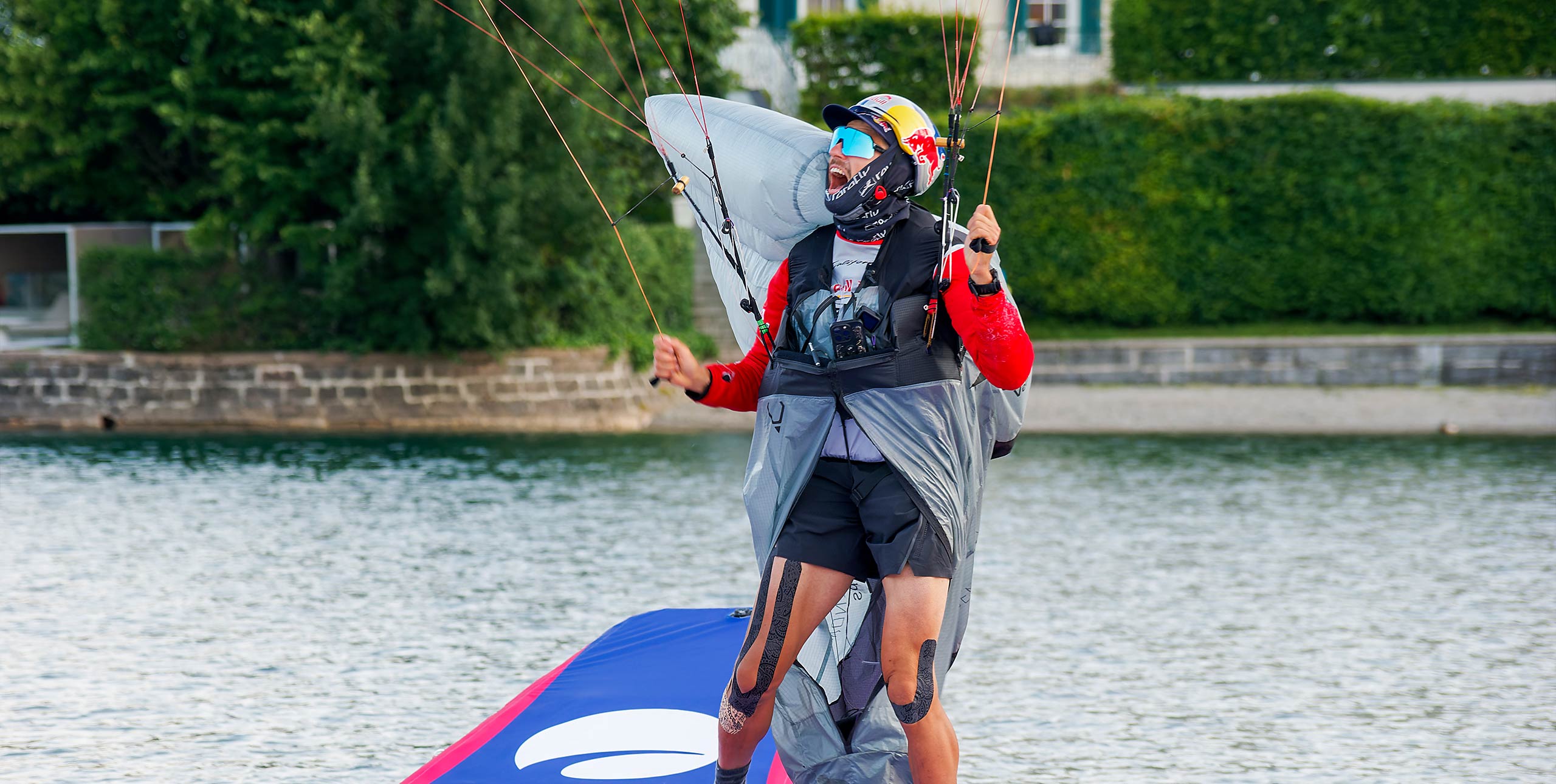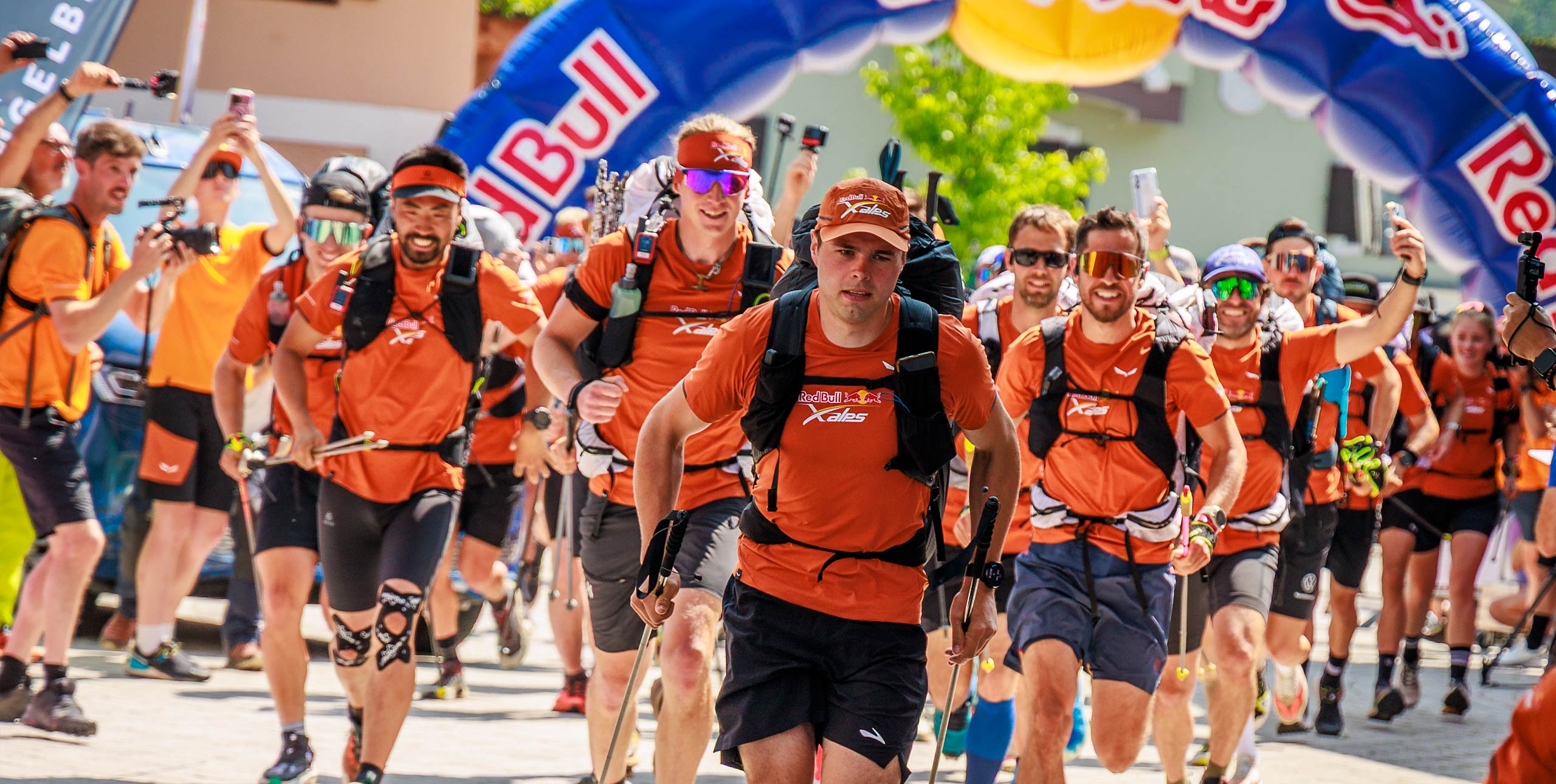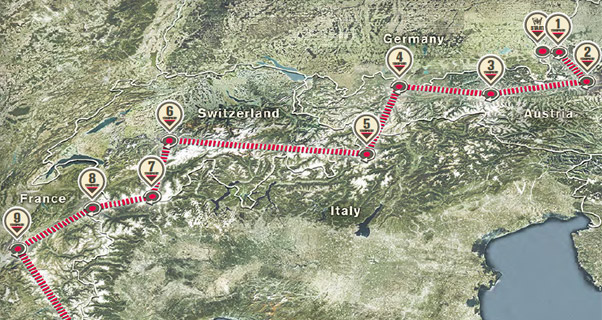
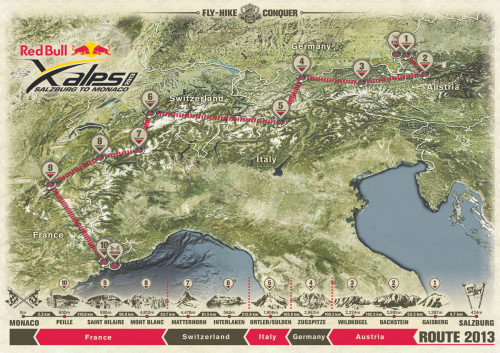
The Red Bull X-Alps 2013 is to be the biggest yet, with organisers announcing that the route is now more than 1,000km long as the crow flies. At 1,031 km long the course is almost 20% – 167km – longer than the 2011 race, which was 864km as the crow flies.
The route was officially unveiled at a launch in Salzburg, Austria on 11 March, where organiser Hannes Arch said the longer route would “test athletes to the limit”.
The route is longer because of extra turnpoints. The 2011 race had eight turnpoints plus the start and finish – 2013 will see 10 plus start and finish.
The 2013 race will zig and zag through the Alps. After the start in Salzburg pilots will head south to the Dachstein, before heading west to southern Germany. They will then have to turn sharply south to the Sud Tyrol in Italy, before heading west but staying north to reach Interlaken. From there it’s south to the Matterhorn, west to Mont Blanc, and then even further west out to St Hilaire, home of the famous Coupe Icare.
This adds a whole new dimension to the event – in all previous X-Alps races athletes have made the Mont Blanc turnpoint and then headed south. This year they will instead have to follow the arc of the French Alps all the way round before turning south towards Monaco and goal.
TURNPOINTS
Like 2009 and 2011 the race will begin in Salzburg, Austria.
From there athletes must make their way southeast to the Hoher Dachstein (2,995m) and then west through the Hohe Tauern national park to the Kitzbühel Alps where a tough ascent of Wildkogel (2,224m) awaits.
Athletes must then negotiate tricky Innsbruck airspace and a potentially confusing Karwendel crossing to the Zugspitze (2,962m), Germany’s highest mountain.
The route then crosses to the southern Alps, passes through Sulden in the Ortler region and then heads west on one of the longest stages to Interlaken in Switzerland.
Then it’s south across the Bernese Oberland to the Matterhorn (4,478m), one of the most spectacular parts of the route.
The race then takes in Mont Blanc (4,810m), before heading west to St Hilaire. After that it’s south to Monaco and, for the elite few, splashdown on the raft in the Mediterranean.
Athletes who complete the 1,031km 2013 race could well travel over 2,000km by foot and paraglider to get to Monaco, making the 2013 race the hardest yet.

PREVIOUS RACES
First run in 2003 the original Red Bull X-Alps started on the Dachstein but then only had two turnpoints – Mont Blanc and Mont Gros near Monaco. Only three pilots out of a field of 19 made it to Monaco: Kaspar Henny (CH, 11 days 22 hours 55 minutes), David Dagault (FR, +5 hours 25) and Stefan Bocks (DE, +8 hours 45) all made the finish after 12 days racing. Prince Albert of Monaco presented the three teams who made it with the Olympic Medal of Monaco.
In 2005 a third turnpoint was added – the Zugspitze on the German/Austria border. Kari Castle and Niki Hamilton were the first women to take part. A total of 17 athletes competed with four making it to the goal. The Swiss dominated: Alex Hofer won in 12 days one hour 20 minutes, Urs Lotscher made it 25 hours later, followed by Kaspar Henny.
In 2007 30 teams took part, and the turnpoints included the Dachstein (start) then the Marmolada, Eiger and finally Mont Gros above Monaco. Swiss pilot Martin Muller was the fastest but was given a 36-hour penalty for violating airspace. Alex Hofer won for a second time, followed by Romanian athlete Toma Coconea. Muller made third.

In 2009 the start was moved to the centre of Salzburg, with the first turn point the Gaisberg just outside the city. Turnpoints then included Austria’s Gaisberg, the Watzmann in Germany, the Grosglockner in Austria, Marmolada in Italy, Mont Blanc and finally Mont Gros. A stunning race unfolded, with race favourite Alex Hofer out-done by Chrigel Maurer and supporter Thomas Theurillat. Chrigel made it to Monaco in nine days, 23 hours and 54 minutes, covering 1,379km on foot and in the air to complete the 818km race. Alex Hofer also made it to Monaco and was second, with Honza Rejmanek (US) just shy of goal and in third.
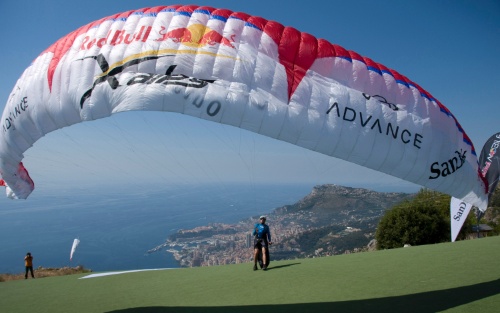
In 2011 32 athletes took part. The race again started in Salzburg and then took in the Gaisberg, the Dachstein, Grosglockner, the Drei Zinnen in Italy, Piz Palu in Switzerland, the Matterhorn, Mont Blanc and Mont Gros above Monaco. At 864km it was the longest race to date, and was again won by Chrigel Maurer and Thomas Theurillat. Despite being forced to sit out a 24 hour airspace infringement penalty Maurer got to Monaco in 11 days four hours and 52 minutes. Toma Coconea arrived on day 14 to take second place, while Austria’s Paul Guschlbauer was only 9km from the line and took third.

Maurer travelled 1,807km during the 2011 race, 1,312km in the air and 486km on the ground.
START DATE
The race starts on 7 July 2013, and will last for around two weeks.
It will be the sixth edition of what organisers bill as, “the world’s toughest adventure race” where every kilometre covered must be either on foot or by paraglider.
New rules for the 2013 race include a second supporter, a longer mandatory rest period – 10.30pm-5am – and the addition of a ‘night pass’ which will allow athletes to race on foot through the night. Athletes cover up to 100km a day on foot or, given good flying conditions, 200km+ a day by paraglider.
The 2013 edition comes on the ten-year anniversary of the first Red Bull X-Alps.
Read more: Ten years of pain and glory
Updated 12 March
• Got news? Send it to us at news@xccontent.local


